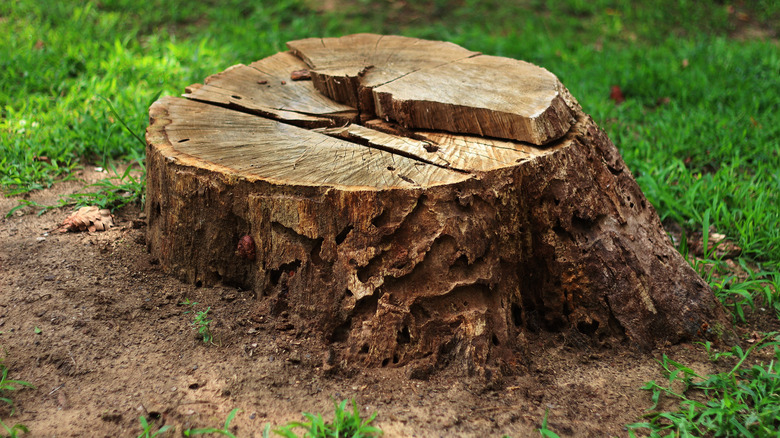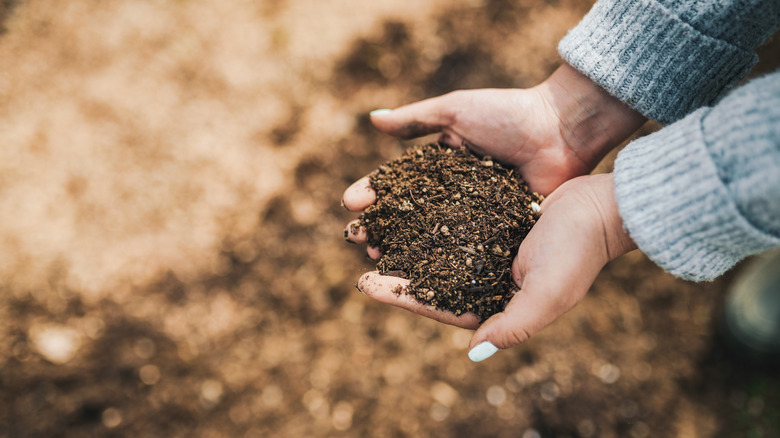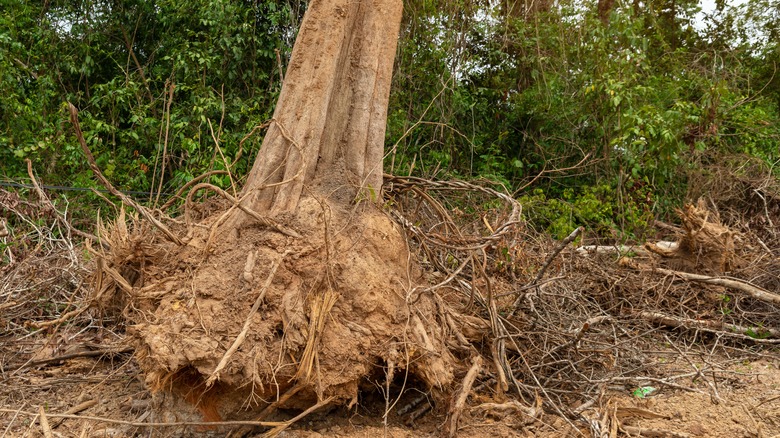Why You Should Think Twice Before Planting A Tree Too Close To An Old Stump
Stumps are the equivalent of dead space in your yard. They don't add anything aesthetic to the landscaping, and they block you from planting anything else in the area. Depending on how curated your yard is, this could leave an obvious hole in your design. Because of that, you might be tempted to plant another tree close to the stump, and ASAP. However, you might want to think twice before doing so. It can be more difficult for a new tree to survive when planted too close to an old stump, mainly because of increased competition. You'll need to consider things like depleted nutrients in the soil and the sapling fighting established root systems for space.
If your yard has plenty of room, you would be better off finding another spot to plant your brand-new tree. However, if you only have that one area where your sapling can go, tread carefully. Be aware you might need to take some extra precautions to ensure it grows successfully, and even then, it might not thrive. Here's why.
The soil might be depleted in nutrients
If you had to cut down an established tree, that means it was in your yard for many years — possibly even several decades. That means that the plant was utilizing all of the nutrients, microorganisms, and minerals in the soil to grow big and strong. Because of that, the area might be depleted in those things, making it difficult for a new tree to thrive. To avoid this, try to plant the new tree a minimum of three feet away from the stump. You might be tempted to add fertilizer to the area after planting to boost the dirt's nutrients, but research and university extensions show that's not a good idea. A new tree focuses on developing its root system in the first year, and fertilizers (often packed with nitrogen) will stimulate stem and leaf growth, diverting energy away from the roots. That's why it's imperative to plant it in an area already rich with established nutrients.
Another worry is that there might be pathogens or diseases in the soil left over from the old tree, especially if it died due to illness. A young sapling with delicate roots will be susceptible to these, especially if you plant the same species you had to cut down. For example, if your tree died of oak wilt and you plant another oak tree near the stump, the fungus can spread through the new roots and infect the sapling. To avoid this, make sure you plant a new tree that isn't susceptible to those diseases.
The sapling's roots won't have enough space to grow
Another issue with planting a new tree too close to a stump is that it might not have enough space underground to establish roots. Depending on how big and old the tree you cut down was, it might have had an extensive root system. Because of this, your new sapling will have to fight for space for its own roots. This will stunt its growth, not allowing it to flourish like it needs to. One workaround for this is to wait a few years for the roots to decompose. They will begin to break down after a year, but the more time you allow to pass, the better. This will ensure your sapling will have less competition underground.
If you can't bear to look at the gap in your landscaping any longer and can't wait a whole year to replant, then plant your tree at least three feet away from the stump. However, if you have the space, it would be best to increase that radius to eight feet for best results.


